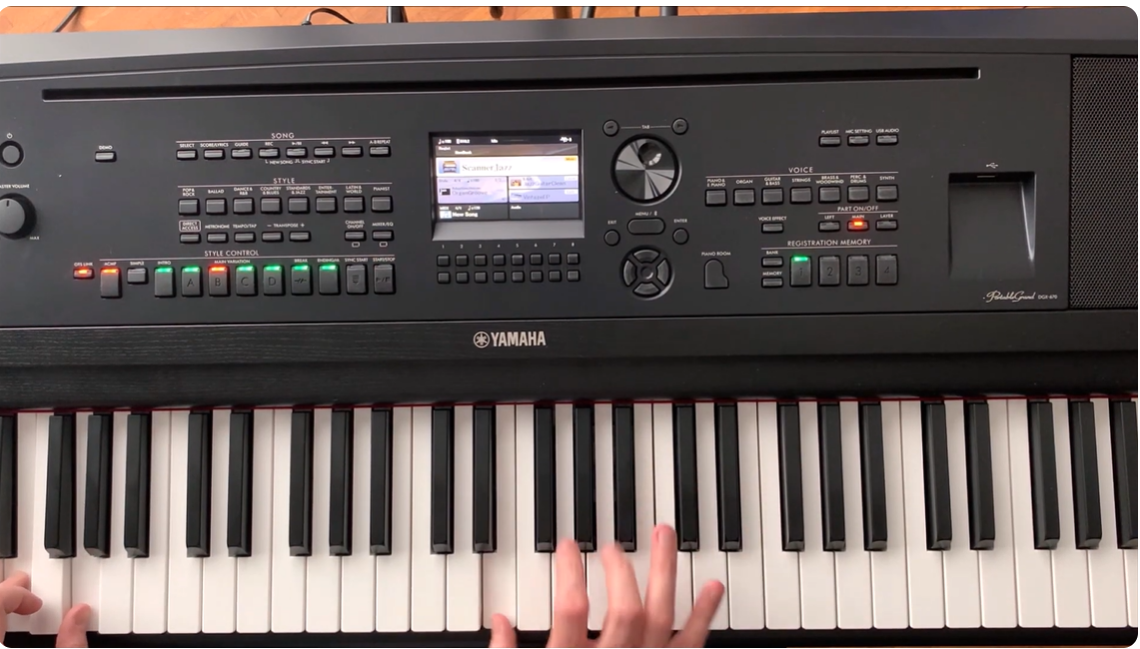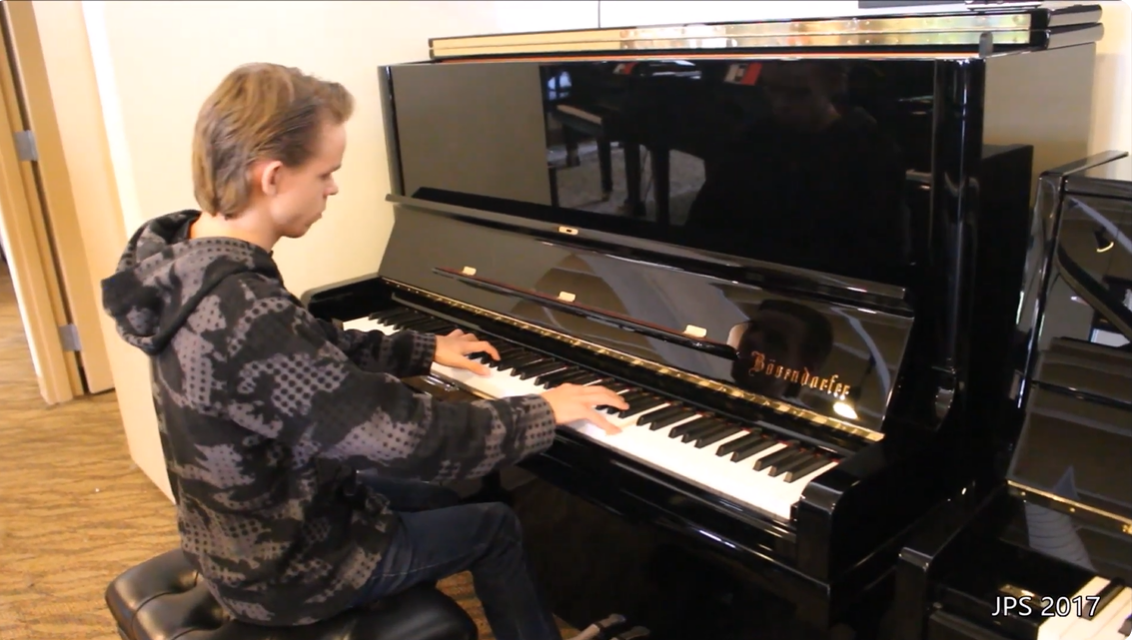When choosing a piano, there are several important factors to keep in mind. First, work within your budget to find an option that suits your financial situation. Next, consider the space you have available—pianos come in various sizes, so make sure it fits comfortably in your home. It’s also essential to have realistic expectations about how the piano will perform based on your skill level and goals.
If you’re looking at digital pianos, take the time to explore their features, as many offer useful tools that can enhance your playing experience. Do thorough research on the different types of pianos available—acoustic, digital, upright, grand—and understand the pros and cons of each. Most importantly, try out different pianos in person before making a final decision.
Choosing a piano is a big commitment, so preparing yourself by knowing what matters most to you will help you make a confident and satisfying choice. Once you clearly understand your needs, you can explore your options and find the perfect piano for you.
Table of Contents
ToggleWhat to Think About Before Choosing a Piano?
Picking out a piano, whether you’re buying or renting, is a big decision and shouldn’t be rushed. Even affordable options can still cost quite a bit, so it’s important to take the time to find a piano that fits your needs when it comes to:
Your budget
The space you have available
What you expect from the instrument
It’s also worth reflecting on why you want a piano and how committed you are to learning and playing. A piano can be a fantastic investment if you’re motivated, but without dedication, it might just end up as an expensive piece of furniture.
As you explore different pianos, you’ll get a clearer idea of your personal preferences and what feels right for you. This process will help you find the piano that suits your lifestyle and goals perfectly.
Budget and Maintenance Costs
No matter what your budget is, there’s an option that can fit your needs. The prices for keyboards and pianos vary widely, ranging from a few hundred dollars to tens of thousands.
If you’re just starting out or have a tight budget, a digital keyboard is a great choice. While they may not offer everything a full-sized piano does, the difference won’t hold back your progress as a pianist.
Digital pianos are another affordable option, and they come with the added benefit of almost no ongoing maintenance. Once you buy the digital instrument, you don’t need to worry about tuning or costly mechanical repairs, which can save you money over time.
If you’re ready to invest a bit more, consider a used acoustic piano. These typically cost between $500 and $900 for a good quality model in playable condition. However, it’s important to have any used piano thoroughly checked by a professional before buying, so you don’t get stuck with expensive repairs right away.
When it comes to acoustic pianos, prices vary depending on the style — upright, baby grand, or grand. Generally, the bigger the piano, the higher the price.
Acoustic pianos tend to hold their value well, especially if you buy a reputable brand like Steinway. They do require regular maintenance, such as tuning and occasional repairs to the keys or action. Plus, moving these instruments can be costly and more complicated.
If buying a piano isn’t within your budget or you’re not ready to commit, renting is a good alternative. You can rent either a piano or a practice room with the instrument you want to use, allowing you to practice without a big upfront investment.
Space Limitations and Portability
When it comes to pianos, space is often one of the biggest challenges. While the idea of owning a grand piano might sound appealing because of its stunning look and rich sound, the reality of fitting it into your home can quickly change your mind.
No matter which piano you pick, it needs to comfortably fit in your living space without getting in the way of your everyday life. If the piano is too big, it can become a constant source of frustration, blocking movement or cluttering your room. On the other hand, choosing a piano that’s too small for the space might leave you feeling like something is missing.
A simple trick to figure out if the piano will fit is to mark its exact dimensions on the floor using tape. Once that’s done, live your day as usual and imagine the piano occupying that spot. This helps you get a real sense of whether the instrument will blend in or become an obstacle.
Portability is another important factor to consider. If you prefer flexibility in where you play or need to move your instrument often, a keyboard is usually the better choice. Keyboards are lighter and easier to carry, so you won’t feel stuck in one place or without your instrument when you want to practice or perform.
Performance Expectations
Digital keyboards and pianos have come a long way and offer many great features, but they still can’t fully match the performance of an acoustic piano. No matter how advanced or expensive, digital instruments don’t quite capture the rich tone and natural resonance of a traditional piano.
Acoustic pianos provide a wider dynamic range and allow for more subtle control over volume and expression. Many players describe a unique physical connection with the instrument — feeling the vibrations under their fingers and even sensing the sound filling the room. This connection often deepens the emotional impact of the music.
If your goal is to play classical music or works by composers like Debussy, who rely heavily on subtle dynamics and tone colors, the limitations of a digital keyboard’s range might hold you back. In those cases, an acoustic piano remains the gold standard.
Digital Features
While digital keyboards and pianos might not match the tone and resonance of traditional acoustic pianos, they offer a range of useful technological features that many players appreciate.
One of the biggest advantages is volume control. You can easily adjust the sound to suit your environment or be considerate of neighbors and roommates. Most digital instruments have a volume knob, and you can also plug in headphones for silent practice.
Because they can connect to external speakers or amplifiers, digital keyboards and pianos are popular choices for live performances and stage bands.
Another benefit is the variety of sounds available. You can switch between different instruments like piano, organ, and even strings, all from the same keyboard. Many digital models also include built-in metronomes to help you keep time and improve your practice sessions.
Some digital pianos and keyboards come with MIDI (Musical Instrument Digital Interface) connectivity. This allows you to connect to computers or other devices, making it easier for composers and musicians to record, edit, and produce music digitally.
Additionally, many digital instruments can work with apps or software to unlock even more sounds, print sheet music as you play, or review and improve your performance over time.
Types of Pianos
When choosing a piano, it’s important to understand the different types available so you can find the best fit for your needs. You shouldn’t just pick the first piano that catches your eye in the store.
Pianos generally fall into four categories:
Digital keyboards
Digital (or electronic) pianos
Upright pianos
Grand pianos
Each type varies in price, size, and performance, so your choice should reflect your budget, space, and playing goals. There’s no one-size-fits-all piano, so having a clear idea of what you want will help you make the right decision.
Digital Keyboards

Digital keyboards are often the most affordable option, and they’re also the most portable and versatile. A good keyboard can take you a long way before you feel limited.
They’re lightweight and usually come in a compact casing that protects the keys and controls, making them easy to transport with a case.
However, the sounds on digital keyboards are either synthesized or sampled, which means they don’t perfectly replicate the natural tone of an acoustic piano. The feel can also be different since keyboards usually don’t have the same mechanical parts or weighted keys, making it harder to achieve dynamic expression.
Higher-end keyboards try to mimic the feel of an acoustic piano by adding weighted keys or responsive action, but this also makes them heavier and more expensive.
Most digital keyboards don’t have a full set of 88 keys like an acoustic piano. Instead, they typically have 61 keys, which is enough for many styles but can be limiting for certain classical or modern pieces that require a wider range.
Digital keyboards don’t come with stands, so you’ll likely need to buy one to maintain good posture while playing. Tables usually aren’t the right height, and they aren’t portable.
You can also add a sustain pedal to your keyboard to simulate the pedal on an acoustic piano. These pedals vary widely in quality and price, from basic plastic models to sturdy metal ones that feel more like the real thing.
Digital Pianos: A Practical and Versatile Choice
Digital pianos offer a great middle ground between portable keyboards and traditional acoustic pianos. While they’re generally larger and more expensive than digital keyboards, they come much closer to recreating the feel of playing a real piano. Most digital pianos feature weighted or hammer action keys, giving you a more authentic touch when you play.
These instruments are often made from wood or wood-like materials, giving them a solid and elegant appearance. One of their biggest advantages is that they don’t require tuning or regular maintenance like acoustic pianos. Despite their classic look, the sound is generated digitally—either through synthesized tones or sampled recordings of real instruments.
Most digital pianos come with the full range of 88 keys, so you’ll be able to play any piece of music without limitation. While they’re more compact than acoustic pianos, they’re still fairly heavy and not ideal for frequent moving. Their design usually means they’re meant to stay in one spot.
It’s also worth noting that technology in digital pianos evolves quickly. New features and better sound engines are released regularly, so an older model might feel outdated sooner than expected. That said, many digital pianos today offer impressive connectivity, built-in learning tools, and a variety of sounds that make them perfect for modern musicians.
Upright Pianos: Classic Sound for Smaller Spaces

Upright pianos are the most compact type of acoustic piano, making them a popular option for homes with limited space. You’ve probably seen them in schools, churches, or even old Western movies. They’re usually around 5 feet wide, about 2 feet deep, and range in height from 37 to 57 inches.
Their vertical design allows them to sit flat against a wall, which is ideal if you’re working with tight quarters. Despite their smaller footprint, the height of an upright piano plays a major role in its sound. Taller models have longer strings and larger soundboards, which means they can produce a richer, more resonant tone.
However, the way the internal mechanism works in an upright piano does place some limitations on performance. The use of springs in the action can reduce the dynamic control and doesn’t offer quite the same smoothness you’d find in a grand piano. Still, upright pianos are a wonderful option for players who want a true acoustic sound and don’t have room for a grand.
Grand Pianos: Unmatched Tone and Playability

Grand pianos are the largest and most powerful pianos available, and they’re often seen as the gold standard in both sound and performance. Even a baby grand takes up considerable space—typically about 5 feet in width and depth. Larger models like concert grands can stretch out to 9 feet in length.
Transporting a grand piano can be a challenge due to its size and weight, but professional movers have ways of managing this by removing the legs and turning the piano on its side. Once it’s in place, though, it becomes a stunning centerpiece in any room.
The grand piano’s action is powered by gravity rather than springs, allowing for faster, smoother keystrokes and quicker note repetition. This gives pianists more control over dynamics and articulation, making it easier to express a wide range of emotion and intensity in their music.
In terms of tone, grand pianos offer the most consistency and the fullest, most resonant sound. Though they were once luxury items only found in royal courts and concert halls, many decent-quality used grand pianos are now available for a few thousand dollars—making them a reachable dream for many serious musicians, provided there’s enough space.
Try Before You Buy: The Importance of Hands-On Testing
While it’s easy to get caught up in specs and reviews, nothing beats trying out a piano in person. What feels great for one player might feel awkward or uninspiring for another. So, if you’re serious about finding the right piano, head to a music store and test out different types and models.
Even if the exact model you’re considering isn’t available, trying a similar instrument can give you a better idea of what you like and what works for you. Pay attention to the feel of the keys, the resistance when you press them, and how the instrument responds to your touch.
Also consider the dynamic range—how well the piano lets you play both soft and loud passages with nuance and control. These subtle differences can make a huge impact on how much you enjoy playing over time.
Finding the Right Fit for Your Musical Journey
Choosing the right piano is a personal decision. It depends on your space, budget, goals, and how the instrument feels beneath your fingers. Whether you’re just starting out or looking to upgrade, there’s no one-size-fits-all solution.
Take your time, weigh the pros and cons of each type, and most importantly, let your own hands and ears guide your decision. With some patience and a little research, you’ll find a piano that inspires you and helps bring your music to life for years to come.

